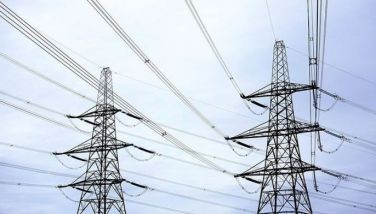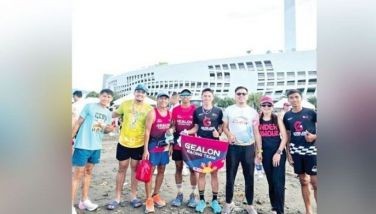Building safer ships for domestic use

Slowly, the Philippines is winning the nod of international ship building conglomerates such that the country is now regarded as an emerging hub not just in Asia, but in the world as well for the global ship-building industry. But this is only half the good story.
The other half is about Tsuneishi Heavy Industries, a Japanese-based ship building company with a 1.47-million square meter shipyard in Cebu, and its expansion plan to build additional facilities that will construct small vessels for Philippine domestic owners.
This is indeed welcome news for Filipino ship owners who need to change their old Roll-On, Roll-Off (RORO) vessels of more than 30 years with something that is more compliant with current technologies and safety standards, and fit for our inter-island shipping needs.
Cause of sea accidents
Over the past decades, Filipino ship owners operating inter-island routes have been forced to buy second-hand vessels from other countries. The second-hand ships that are often not suitable to the local weather conditions and peculiar currents of Philippine waters.
This old system has partially been responsible for a number of sea accidents that have cost the lives of many passengers, not to mention losses in property and damage to the environment.
Tsuneishi is trying to help Filipino ship owners to modernize their fleet, and have been successful in getting a number of orders already. So we should see some welcome changes in our shipping industry in the next few years, and which would hopefully inspire other ship owners to follow.
More shipyards
Going back to the first half of this story, in case you haven’t noticed, a number of international ship building companies are already operating in the country, and from feedback, are quite pleased with the local regulatory environment and the manpower quality.
Tsuneishi, for example, has been in the country for more than 20 years, and has over 13,000 people directly and indirectly employed. Aside from expanding its capacity, it is also set to become a supplier of small tankers, ROROs and small cargo vessels for other Southeast Asian ship owners.
While Tsuneishi still has the leading position in terms of the number of ships built in the Philippines, other international companies like Hanjing Heavy Industries are no pushovers. Korean-based Hanjin is currently operating in Subic, and has built a large part of the Malampaya offshore natural gas production platform.
Other foreign companies are Singapore-based Keppel, although more a ship repair concern with facilities in Batangas, and Australia-based Austal, which just very recently started operating in Cebu.
Altogether, the production from these docks is still a small fraction of what the global market currently sells, but given time especially with the opening of the “maritime corridor” under the upcoming economic integration of the Asean community, a real impetus exists to operate a dock in the Philippines.
Stepping stone
Of course, the Philippines is just one of the many places where these huge ship-building companies are setting up facilities, but this still speaks well of the total environment that we have provided to Tsuneishi, Hanjin and Keppel in the past.
Our English-speaking and largely resilient workforce still stands out as one of the bright spots for interested investors, often more than enough to compensate for the quaint peculiarities of doing business in the country.
The influx of these global ship-builders allows our local people to improve their technical skills in this highly specialized business. These companies, like Tsuneishi, have been sending our people to their mother shipyards for further training; this move is certainly most welcome.
It’s also good that this will jive well for plans by the government, although not exactly well-laid out yet, to make the Philippines a major ship-building hub for ASEAN by developing the local capability in the distant future.
Shipbuilding is not exactly something that our Filipino-owned small mostly-for-repair shipyards can aspire for, but dreams can still become a reality with a lot of luck, plenty of hard work and solid financing.
And building small vessels and RORO vessels for domestic use could be the first giant step forward.
2014 National Collegiate Championship Elite Eight
The Elite Eight stage of the 2014 National Collegiate Championship (NCC) shifts to Manila after completing five playing days at Cebu City Coliseum. The Manila leg starts on Friday, Nov. 21, 2014, at Ynares Sports Center, Pasig City. Tickets for the games are available online through SM Tickets, and also at the venue gates.
The University of San Carlos Warriors, CESAFI runner-up, emerged as the top among the three Cebu teams that dueled with the finest five teams from Manila.
USC scored impressive wins over the Far Eastern University Tamaraws, UAAP runner-up, the Southwestern University Cobras, CESAFI champion, and the University of Visayas Green Lancers. The Warriors’ only loss was to five-peat NCAA champion San Beda Red Lions.
The UV Green Lancers recorded big wins over the National University Bulldogs, UAAP champion, and Arellano Chiefs, NCAA runner-up. The Green Lancers, however, lost to the De La Salle Green Archers and USC to finish with two wins and two losses.
The SWU Cobras, current CESAFI champion, lost all of its four games against the DLSU Green Archers, NU Bulldogs, Arellano U Chiefs, and USC Warriors.
The Elite Eight teams are divided into two groups. Group A is composed of the NU Bulldogs, Arellano U Chiefs, USC Warriors and DLSU Green Archers; and the Group B members are the SBC Red Lions, SWU Cobras, FEU Tamaraws and UV Green Lancers.
Teams from Group A compete with Group B, and the top four of the eight teams advance to Premier Four stage for the championship series. Ties are broken using FIBA rules.
The Champions League (PCCL) National Collegiate Championship is sponsored by media partners ABS-CBN and Philippine Star, Phoenix Petroleum, Molten Balls, Fil-Oil Flying V Sports, Fog City Creamery and Foccacia.
Visit the PCCL website (CollegiateChampionsLeague.net) for more details/information on the National Collegiate Championship, and like our official Facebook fan page (Philippine College Champions League).
Facebook and Twitter
We are actively using two social networking websites to reach out more often and even interact with and engage our readers, friends and colleagues in the various areas of interest that I tackle in my column. Please like us at www.facebook.com and follow us at www.twitter.com/ReyGamboa.
Should you wish to share any insights, write me at Link Edge, 25th Floor, 139 Corporate Center, Valero Street, Salcedo Village, 1227 Makati City. Or e-mail me at reydgamboa@yahoo.com. For a compilation of previous articles, visit www.BizlinksPhilippines.net.
- Latest
- Trending





























